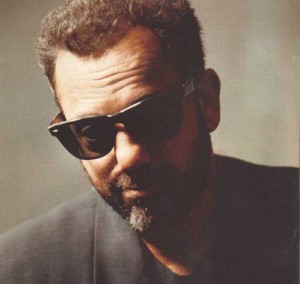Thursday, March 11, 2010
Gangs of New York March
When I thought about camera movement, one of the first scenes that came to mind was the opening scene from Scorsese's Gangs of New York. The scene opens with a shot of a young kid named Amsterdam and his father, Vallon, getting ready for a street battle with a rival gang. During this shot, the camera tilts down an ECU of Vallon's face following the razor blade he is using. It then cuts to Amsterdam and his father handing him the razor and tilts and pans to follow the action.
The next shot is where I feel the really great movement begins with the march down the tunnels. It begins with what looks like a dolly out as Vallon and Amsterdam begin the march and combines it with a lot of pans and tilts to show the other gang members getting ready for the battle. At one point (around 1:35) it switches to an almost subjective POV shot behind Vallon and pans right into a side passage, creating a sense that the audience is in the march and looking into the passage as they pass by. The camera then switches back to a more objective view and dolllies out again as more and more people join the march. Also throughout the scene are instances where the camera pans onto a subject, stops, and then continues panning very quickly so that everything blurs out. This helps to establish continuity and fluidity among the cuts between the various gang members in the tunnel. Toward the end of the scene (3:07) it cuts to an impressive crane shot beginning with the gang marching up a set of stairs and then craning back and upward to show the huge wooden structure they are all inside.
This opening scene is only one instance in this movie of what I consider great camera movement. There are really any numbers of scenes that could be used as examples, such as the battle scene immediatately after the opening. The important thing is that all of the movement is motivated, either by following the action of the actors or by an attempt to create energy such as the handheld shots during the fight scenes.
Tuesday, March 9, 2010
Displaced
The film Displaced is about a father and son hiding in the basement of a jazz club in Paris. It's a fairly long "short" film, but it contains some very visually compelling shots throughout. The shots that I really like are the ones that take place inside the jazz club. Most of the shots feature a red and amber color palette, which makes the club feel warm and inviting. When contrasted with the darker, cooler shots of other places in the film it makes the club feel like a very "homey" place that you would want to come in to off of a cold street.
There also a lot of practical lights in some of the club shots, and I feel like that creates a lot of interesting lighting situations as the DP has to try and match the lighting with the practicals so that the studio lighting is not obvious. In this case, I feel like the DP did a good job of achieving this effect.
There also a lot of practical lights in some of the club shots, and I feel like that creates a lot of interesting lighting situations as the DP has to try and match the lighting with the practicals so that the studio lighting is not obvious. In this case, I feel like the DP did a good job of achieving this effect.
Subscribe to:
Posts (Atom)

